Christian Reichenbächer
Estimating the Joint Probability of Scenario Parameters with Gaussian Mixture Copula Models
Jun 11, 2025Abstract:This paper presents the first application of Gaussian Mixture Copula Models to the statistical modeling of driving scenarios for the safety validation of automated driving systems. Knowledge of the joint probability distribution of scenario parameters is essential for scenario-based safety assessment, where risk quantification depends on the likelihood of concrete parameter combinations. Gaussian Mixture Copula Models bring together the multimodal expressivity of Gaussian Mixture Models and the flexibility of copulas, enabling separate modeling of marginal distributions and dependencies. We benchmark Gaussian Mixture Copula Models against previously proposed approaches - Gaussian Mixture Models and Gaussian Copula Models - using real-world driving data drawn from scenarios defined in United Nations Regulation No. 157. Our evaluation across 18 million scenario instances demonstrates that Gaussian Mixture Copula Models provide a better fit to the data in terms of both likelihood and Sinkhorn distance. These results suggest that Gaussian Mixture Copula Models are a compelling foundation for future scenario-based validation frameworks.
Statistical Modelling of Driving Scenarios in Road Traffic using Fleet Data of Production Vehicles
Apr 09, 2024



Abstract:Ensuring the safety of road vehicles at an acceptable level requires the absence of any unreasonable risk arising from all potential hazards linked to the intended au-tomated driving function and its implementation. The assurance that there are no unreasonable risks stemming from hazardous behaviours associated to functional insufficiencies is denoted as safety of intended functionality (SOTIF), a concept outlined in the ISO 21448 standard. In this context, the acquisition of real driving data is considered essential for the verification and validation. For this purpose, we are currently developing a method with which data collect-ed representatively from production vehicles can be modelled into a knowledge-based system in the future. A system that represents the probabilities of occur-rence of concrete driving scenarios over the statistical population of road traffic and makes them usable. The method includes the qualitative and quantitative ab-straction of the drives recorded by the sensors in the vehicles, the possibility of subsequent wireless transmission of the abstracted data from the vehicles and the derivation of the distributions and correlations of scenario parameters. This paper provides a summary of the research project and outlines its central idea. To this end, among other things, the needs for statistical information and da-ta from road traffic are elaborated from ISO 21448, the current state of research is addressed, and methodical aspects are discussed.
Identifying Scenarios in Field Data to Enable Validation of Highly Automated Driving Systems
Mar 09, 2022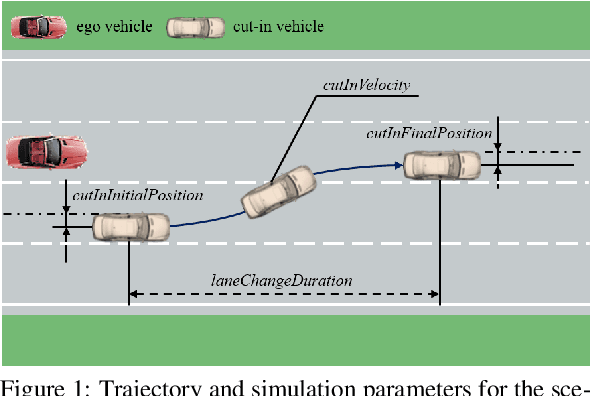
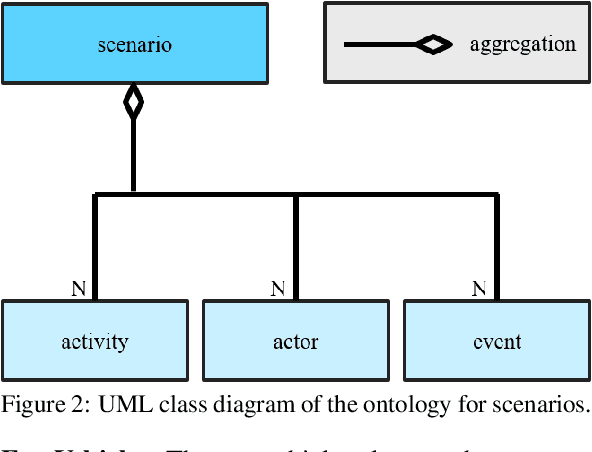
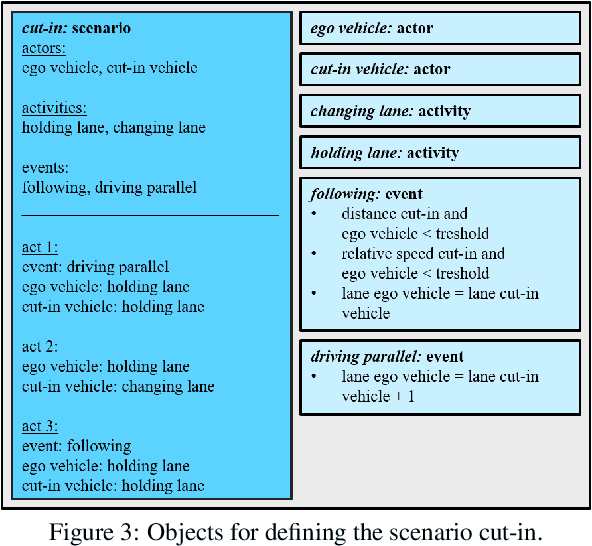
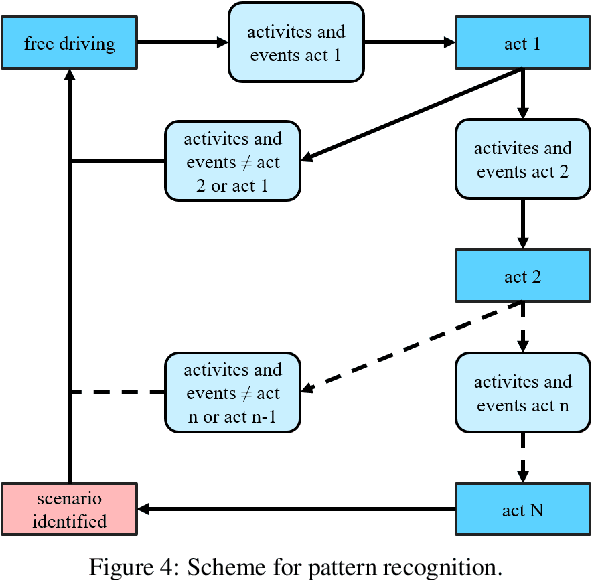
Abstract:Scenario-based approaches for the validation of highly automated driving functions are based on the search for safety-critical characteristics of driving scenarios using software-in-the-loop simulations. This search requires information about the shape and probability of scenarios in real-world traffic. The scope of this work is to develop a method that identifies redefined logical driving scenarios in field data, so that this information can be derived subsequently. More precisely, a suitable approach is developed, implemented and validated using a traffic scenario as an example. The presented methodology is based on qualitative modelling of scenarios, which can be detected in abstracted field data. The abstraction is achieved by using universal elements of an ontology represented by a domain model. Already published approaches for such an abstraction are discussed and concretised with regard to the given application. By examining a first set of test data, it is shown that the developed method is a suitable approach for the identification of further driving scenarios.
The Atlas of Lane Changes: Investigating Location-dependent Lane Change Behaviors Using Measurement Data from a Customer Fleet
Jul 09, 2021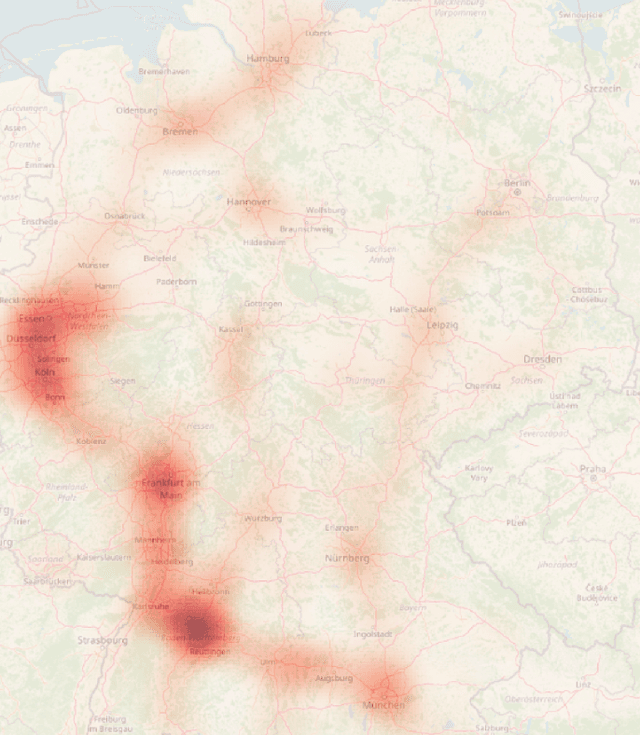

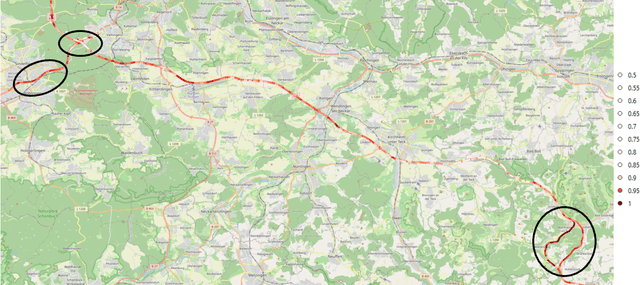
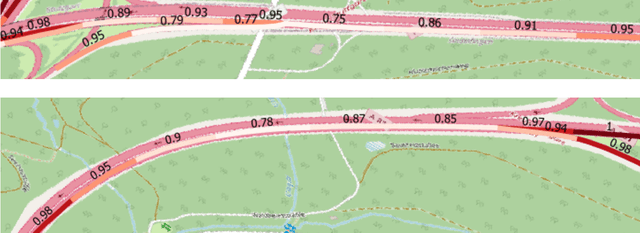
Abstract:The prediction of surrounding traffic participants behavior is a crucial and challenging task for driver assistance and autonomous driving systems. Today's approaches mainly focus on modeling dynamic aspects of the traffic situation and try to predict traffic participants behavior based on this. In this article we take a first step towards extending this common practice by calculating location-specific a-priori lane change probabilities. The idea behind this is straight forward: The driving behavior of humans may vary in exactly the same traffic situation depending on the respective location. E.g. drivers may ask themselves: Should I pass the truck in front of me immediately or should I wait until reaching the less curvy part of my route lying only a few kilometers ahead? Although, such information is far away from allowing behavior prediction on its own, it is obvious that today's approaches will greatly benefit when incorporating such location-specific a-priori probabilities into their predictions. For example, our investigations show that highway interchanges tend to enhance driver's motivation to perform lane changes, whereas curves seem to have lane change-dampening effects. Nevertheless, the investigation of all considered local conditions shows that superposition of various effects can lead to unexpected probabilities at some locations. We thus suggest dynamically constructing and maintaining a lane change probability map based on customer fleet data in order to support onboard prediction systems with additional information. For deriving reliable lane change probabilities a broad customer fleet is the key to success.
 Add to Chrome
Add to Chrome Add to Firefox
Add to Firefox Add to Edge
Add to Edge